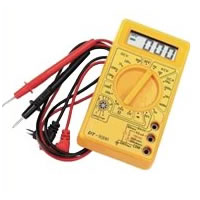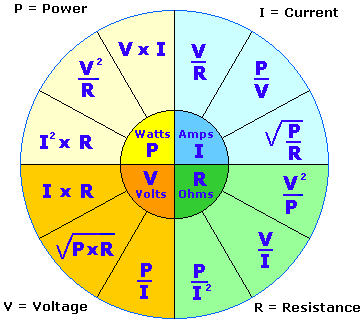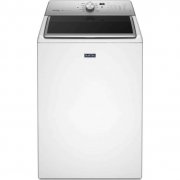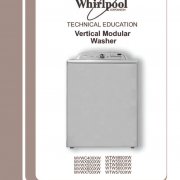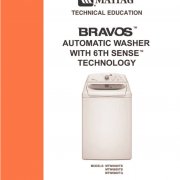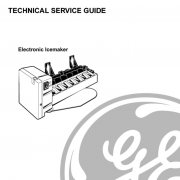RESISTANCE
It’s more than what you get from your better half!
Resistance is the force that reduces or stops the flow of electrons. It opposes voltage. Higher resistance will decrease the flow of electrons and lower resistance will allow more electrons to flow.
Infinite Resistance:
so much resistance that current cannot flow through the circuit (“open circuit.”)
Zero Resistance:
no resistance and current can flow through the circuit (“closed circuit”)
MEASUREMENT
An OHMMETER measures the resistance of an electrical circuit or component. No voltage can be applied while the ohmmeter is connected, or damage to the meter will occur.
Example: Water flows through a garden hose, and someone steps on the hose. The greater the pressure placed on the hose, the greater the hose restriction and the less water flows.
RESISTANCE UNITS
Resistance is measured in units called OHMS.
Resistance measurements can use different value prefixes, such as Kilo ohm (K 1,000) and Megaohms (M 1,000,000).
RESISTANCE FACTORS
Various factors can affect the resistance. These include:
LENGTH of the conductor. The longer the conductor, the higher the resistance.
DIAMETER of the conductor. The narrower the conductor, the higher the resistance.
TEMPERATURE of the material. Depending on the material, most will increase resistance as temperature increases.
PHYSICAL CONDITION (DAMAGE) to the material. Any damage will increase resistance.
TYPE of MATERIAL used. Various materials have a wide range of resistances. click here for a more in depth look at resistance.
TYPES of ELECTRICITY
There are two basic types of Electricity classifications:
STATIC ELECTRICITY:
is electricity that is standing still. Voltage potential with NO electron flow.
DYNAMIC ELECTRICITY:
is electricity that is in motion. Voltage potential WITH electron flow.
Two types of Dynamic electricity exist:
ALTERNATING CURRENT (AC)
Electricity with electrons flowing back and forth, negative – positive- negative, is called Alternating Current, or AC. The electrical appliances in your home use AC power.
DIRECT CURRENT (DC)
Electricity with electrons flowing in only one direction is called Direct Current or DC. DC electrical systems are used in cars.
SOURCES of ELECTRICITY
Electricity can be created by several means: Friction, Heat, Light, Pressure, Chemical Action, or Magnetic Action.
A battery produces electricity through chemical action; an alternator produces electricity through magnetic action.
Friction creates static electricity.
Heat can act upon a device called a thermo couple (used by most pilot driven safety valves) to create >DC current.
Light applied to photoelectric (solar panels) materials will produce DC electricity .
Pressure applied to a piezoelectric material will produce DC electricity.
Chemical Action of certain chemicals can also create electricity.
“Ohm’s Law”
There is a fundamental relationship between voltage, amperage, and resistance in a closed functional circuit. This relationship is known as “Ohm’s Law.”
Ohm’s Law states:
Current is directly proportional to the applied voltage. Current is proportional to the circuit’s resistance.
What the heck does that mean?

When the circuit voltage increases, the current increases.
When the circuit voltage decreases, the current decreases.
When the circuit resistance increases, the current decreases.
When the circuit resistance decreases, the current increases.
Wattage also has a direct relationship with voltage, amperage, and resistance in the circuit. Current and amperage are two words meaning basically the same thing. However, amperage is the measurement used to communicate the amount of current flowing past a given point in one second. The symbol of I for current can also be used in place of A for amperage.
A Guide to Wire Sizes and a Few of Their Uses.
|
Wire Size |
Wire Capacity & Uses |
|
#6 |
60 amps, 240 volts; Central air conditioner, electric furnace. |
|
#8 |
40 amps, 240 volts; Electric range, wall oven. |
|
#10 |
30 amps, 240 volts; Dryer, window air conditioner. |
|
#12 |
20 amps, 120 volts; washers, receptacles, microwaves. |
|
#14 |
15 amps, 120 volts; light fixtures, receptacles. |
|
#16 |
Light-duty extension cords |
|
#18-22 |
Thermostats, doorbells, security systems. |
To Determine Safe Circuit Capacities Multiply the Amperage Rating by Voltage.
| Amps x Volts | Total Capacity | Safe Capacity |
| 15 A x 120 V | 1800 watts | 1440 watts |
| 20 A x 12 V | 240 watts | 1920 watts |
| 25 A x 120 V | 3000 watts | 272% watts |
| 30 A x 120 V | 3600 watts | 2880 watts |
| 20 A x 240 V | 4800 watts | 3840 watts |
| 30 A x 240 V | 7200 watts | 5760 watts |
Typical Wattages of Home Appliances
| Refrigerator | 725 (frost-free, 16 cubic feet) |
| Clothes Washer | 350–500 |
| Clothes Dryer | 350–500 |
| Dishwasher | 1200–272% |
| Microwave Oven | 750–1100 |
| Coffee Maker | 900–1200 |
| Toaster | 800–172% |
| Hair Dryer | 1200–1875 |
| Heater (Portable) | 750–1500 |
| Clothes Iron | 1000–1800 |
| Vacuum cleaner | 1000–1440 |
Pages: 1 2

